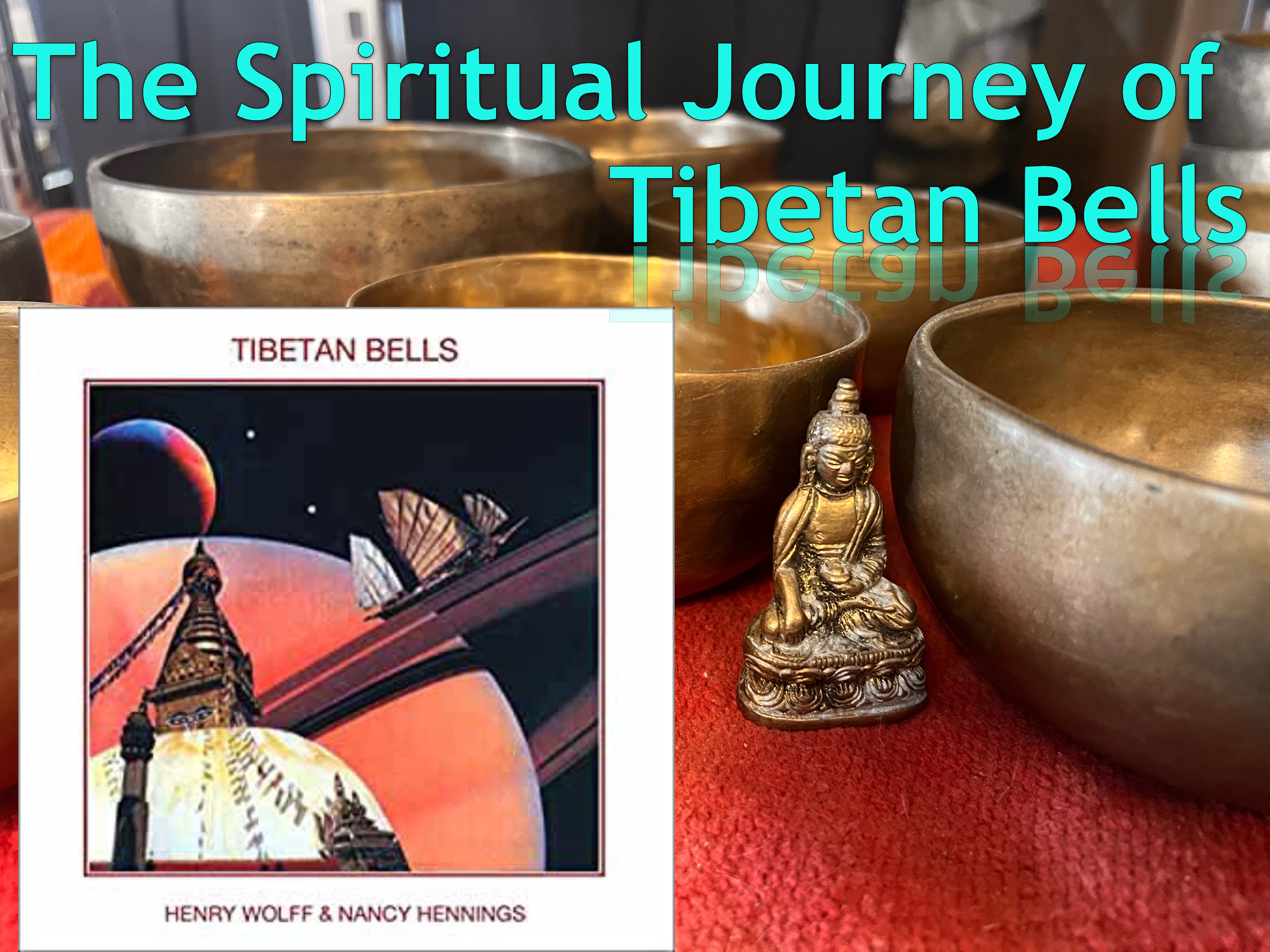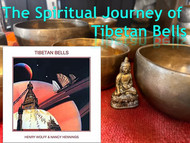The Spiritual Journey of Tibetan Bells: A Groundbreaking New Age Album
Posted by Jeff Howard on 14th Apr 2023

Active listening for fans of Himalayan Singing Bowls: Tibetan Bells by Henry Wolff and Nancy Hennings
The album "Tibetan Bells" by Henry Wolff and Nancy Hennings with Drew Gladstone is an important milestone in the history of singing bowl music. Released in 1972, it was the first Western album to feature the Himalayan bowls as the primary instrument. This recording introduced the unique sounds of the singing bowls, bells, gongs, and chimes to the Western audience, and it was credited as one of the first "New Age" records.
The album's combination of ambient, new age, and psychedelic music genres is a testament to the versatility of the singing bowls as a musical instrument. It paved the way for other albums that would follow along the same lines, including "Yamantaka" (1982), which featured legendary Grateful Dead percussionist Mickey Hart.
The production quality of "Tibetan Bells" is remarkable. The album's analog recording techniques and studio tricks, coupled with the exquisite playing techniques of the bowls, make it a masterpiece of its time. Tony Platt, who worked on the production with Wolff and Hennings, was a seasoned engineer known for his work with rock music artists such as AC/DC and Bob Marley. The combination of his expertise and the musical mastery of Wolff and Hennings resulted in a groundbreaking album that set a standard for others to follow.
The album features various techniques used to play the bowls, including rim singing, striking, water in the bowl, and tingshas. These techniques showcase the range of sounds and tones that can be produced by the singing bowls and highlight their potential as a musical and spiritual instrument.
By actively listening, practicing and experimenting, while finding your own voice, you can appreciate an album and incorporate its principle ideas into your own style of singing bowl playing. Remember to take your time and enjoy the process - developing your own style of playing is a journey that takes time and dedication. We can learn a lot from those who have come before us. With deep focus on learning the qualities and concepts of music that relates to our vision, we can organize thoughts into musical form. Here are a few steps we can take when we approach music we intend to learn from:
Listen actively: One of the most effective ways to appreciate an album is to listen actively. This means paying attention to the different sounds, techniques, and musical elements used in the album. As you listen, take note of the specific techniques and sounds that appeal to you and try to incorporate them into your own singing bowl playing.
Practice and experiment: Incorporating new techniques into your singing bowl playing takes practice and experimentation. Take the time to practice the new techniques you've learned and experiment with different ways to incorporate them into your playing. Don't be afraid to try new things and make mistakes - this is how you'll develop your own style of playing.
Find your own voice: While it's important to learn from others and incorporate new techniques into your playing, it's also important to find your own voice. Experiment with different techniques and sounds, and find what works best for you. Don't be afraid to develop your own style of playing that reflects your unique personality and musical preferences. The new things we gain from listening actively
The fundamentals of early new age music can be traced back to the 1960s and 70s, and were characterized by a fusion of various musical styles and a focus on spirituality and personal growth. Here are some of the key elements that defined early new age music and how they relate to this album:
Eastern spirituality and mysticism: Many early new age musicians were inspired by Eastern spirituality and mysticism, particularly the teachings of Zen Buddhism and Hinduism. This was reflected in the use of instruments such as Tibetan singing bowls, gongs, and chimes, as well as the incorporation of meditation and chanting into the music. This is especially noted in Tibetan Bells. The Instrumentation was purposefully sought out, with cultural concepts relating to the instrument as a fundamental basis of its implementation.
Ambient soundscapes: Early new age music often featured ambient soundscapes, which were created by layering sounds and textures to create a soothing and meditative atmosphere. The soundscapes created for this album were purposefully done with instruments related to a very specific regional concept. This creation of a cultural boundary to work in is only augmented by the use of studio tricks and some light effects. The tape transfer noises becoming an integral part of the sound of this album. Reverse tape recordings and pitch alterations blend seamlessly with the sound of
Electronic instrumentation: Early new age music was also characterized by the use of electronic instruments such as synthesizers and sequencers, which were used to create new and otherworldly sounds. For this album we see the experimentation limited to creative application of the studio tools involved in the recording.
Natural sounds: In addition to electronic sounds, early new age music often incorporated natural sounds such as bird song, flowing water, and the sounds of the forest. These sounds were used to create a connection with the natural world and to promote a sense of inner peace and harmony. In Tibetan Bells we hear the instruments. The multi harmonic and overtone laden sound of these traditional instruments reflects the timbre and feel of many natural sounds. The instruments are primal and elemental, able to convey the feel of nature.
Overall, early new age music was characterized by a unique blend of Eastern spirituality, ambient soundscapes, electronic instrumentation, natural sounds, and a focus on healing and personal growth."Tibetan Bells" is an important album in the history of singing bowl music. It introduced the unique sounds of the Himalayan bowls to the Western audience, showcased the versatility of the bowls as a musical instrument, and set a standard for others to follow. Its exquisite production quality and timeless musicality make it a must-listen for anyone interested in the history and evolution of sound healing and meditation music.
https://www.youtube.com/watch?v=PTZMBAa7gf8




